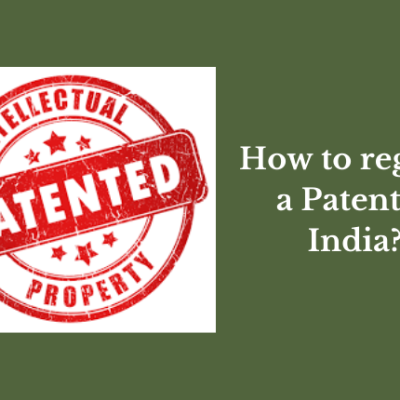History of Patents in India
The history of patent law in India has evolved over several centuries, influenced by British colonial rule, post-independence reforms, and global intellectual property agreements. From the first patent law in 1856 to the latest amendments in the 21st century, India’s patent system has undergone major transformations to align with economic and technological advancements.
Early Patent System in India (Pre-Independence Era)
India’s patent system before independence was largely shaped by British colonial laws. The British introduced patent laws in India to protect their own industries and innovations, often neglecting Indian inventors. The evolution of patent law in this era reflects a gradual shift from British-controlled rules to a structured legal framework that later influenced post-independence reforms.
The First Patent Law (1856)
The first patent law in India was introduced in 1856 under British rule.
It was based on the British Patent Law of 1852.
The law granted exclusive privileges (patents) for 14 years to inventors.
The first recorded patent in India was granted to George Alfred DePennin, an inventor based in Calcutta.
He patented an invention for an efficient punkah (fan)-pulling machine.
This marked the beginning of a formal patent system in India.
The 1859 Amendment
The 1856 Act was repealed and replaced by the Patents Act of 1859.
Key changes included:
Patent term reduced to 6 years (from 14 years).
Requirement of prior public use: if an invention had been publicly used before filing, it could not be patented.
Protection was limited to British-controlled territories in India.
Patents & Designs Protection Act, 1872
In 1872, the Patents and Designs Protection Act was enacted.
This Act provided protection for industrial designs and patents together.
This Act introduced the concept of priority rights (allowing inventors to claim patents based on earlier foreign filings).
It laid the foundation for the modern patent system in India.
Consolidation of Patent Laws (1883 & 1888)
In 1883, an amendment allowed patent rights to be granted in India for inventions patented in Britain.
In 1888, the Act was modified to allow Indian inventors to apply for patents directly.
The Indian Patents & Designs Act, 1911
The first consolidated patent law for all of India.
It replaced all previous laws and introduced a centralized patent system.
Patents were granted for 16 years.
The Controller of Patents was introduced, creating a structured system for patent administration.
The Act allowed compulsory licensing, where the government could allow others to use a patent under special conditions.
Allowed British companies to extend their patents to India easily.
Post-Independence Era (1947 – 1970s) and Evolution of Indian Patent Law
After gaining independence in 1947, India needed a patent system that would support domestic industries rather than favoring foreign companies as in the colonial era. The government aimed to balance innovation, industrial growth, and public interest, especially in critical sectors like pharmaceuticals and agriculture.
This period saw major changes in India’s patent system, ultimately leading to the Patents Act, 1970, which became the foundation of modern Indian patent law.
Need for a New Patent Law
Issues with the colonial patent system
The Indian Patents & Designs Act, 1911 favored foreign companies.
Over 80% of patents were held by foreign entities, especially in pharmaceuticals and chemicals.
High drug prices due to foreign monopolies.
No strong provisions for compulsory licensing or domestic industry growth.
Growing Demand for Change
India’s leaders, including Jawaharlal Nehru, emphasized self-reliance in science and technology.
Indian scientists, industrialists, and policymakers demanded patent laws that encouraged local innovation.
The government sought to reduce dependency on foreign pharmaceutical companies and promote affordable medicine.
The Justice N. Rajagopala Ayyangar Committee (1957-1959)
In 1957, the Indian government formed a committee under Justice N. Rajagopala Ayyangar to review the patent system.
His report (1959) was one of the most important documents in India’s patent law history.
The committee recommended major reforms, including:
India should abolish product patents for food, medicines, and chemicals to prevent foreign monopolies.
Only process patents should be granted for pharmaceuticals and chemicals, allowing Indian companies to develop alternative production methods.
Strengthen compulsory licensing to ensure access to essential goods.
Reduce patent terms to 14 years (instead of 16 years under the 1911 Act).
Establish a stronger patent administration system.
The Patents Act, 1970: A Landmark Legislation
Based on Ayyangar’s recommendations, India passed The Patents Act, 1970, which completely overhauled the patent system.
Major Features of the Patents Act, 1970
Abolition of Product Patents in Pharmaceuticals & Agrochemicals
To prevent foreign companies from monopolizing essential drugs and chemicals.
Allowed Indian pharmaceutical companies to manufacture cheaper generic versions.
Introduction of Process Patents
Only process patents were granted in the food, drug, and chemical sectors.
This allowed Indian manufacturers to create the same product using a different process.
Shortened Patent Term
14 years for most patents.
7 years for food, drugs, and chemical patents.
Strong Compulsory Licensing Provisions
The government could force a patent holder to license their patent if:
The invention was not being used in India.
The price was too high.
Public interest was affected.
Encouraging Domestic Innovation
The law favored Indian companies, helping them become self-reliant.
Led to rapid growth in India’s pharmaceutical industry.
Impact of the Patents Act, 1970
Growth of India’s Pharmaceutical Industry
Before 1970, India imported most of its medicines.
After 1970, Indian companies like Ranbaxy, Cipla, and Dr. Reddy’s started manufacturing affordable medicines.
India became a global leader in generic drugs.
Reduction in Drug Prices
Foreign companies could no longer control drug prices with patents.
Essential medicines became cheaper and more accessible.
Boost to Indigenous Innovation
Indian scientists and researchers started focusing on alternative drug formulations.
Local industries grew in agriculture, chemicals, and engineering.
The TRIPS Agreement and Patent Reforms (1995 – 2005)
The period from 1995 to 2005 was a transformational phase in India’s patent law, driven by its commitments under the World Trade Organization (WTO). India was required to align its patent laws with the global intellectual property framework, particularly the Agreement on Trade-Related Aspects of Intellectual Property Rights (TRIPS).
This era saw major amendments to the Patents Act, 1970, reintroducing product patents, extending patent terms, and modernizing India’s intellectual property regime.
India’s Entry into the WTO and TRIPS (1995)
What is TRIPS?
TRIPS (Trade-Related Aspects of Intellectual Property Rights) is an international agreement under the WTO (World Trade Organization).
It sets minimum standards for intellectual property rights (IPR), including patents, trademarks, and copyrights.
It required all WTO members (including India) to comply with uniform patent protection laws.
India’s Obligations under TRIPS
India joined the WTO in 1995, making it bound to comply with TRIPS provisions.
Under TRIPS Article 27, India had to:
Allow product patents in all fields of technology, including pharmaceuticals and agriculture.
Grant patents for at least 20 years.
Strengthen patent enforcement mechanisms.
India was given a 10-year transition period (1995–2005) to gradually implement these changes.
Key Amendments to Indian Patent Law (1995 – 2005)
To comply with TRIPS, India made three key amendments to the Patents Act, 1970:
The Patents (Amendment) Act, 1999
Introduced the mailbox system:
Allowed applicants to file patent applications for pharmaceutical and agricultural products, even though product patents were not yet granted.
Introduced Exclusive Marketing Rights (EMRs):
Provided a temporary monopoly (up to 5 years) for drug companies before a full patent system was implemented.
The Patents (Amendment) Act, 2002
Extended the patent term from 14 years to 20 years (for all patents).
Introduced compulsory licensing provisions under TRIPS, allowing India to grant licenses for life-saving drugs in cases of public health emergencies.
Strengthened patent examination procedures.
The Patents (Amendment) Act, 2005
Reintroduced product patents in pharmaceuticals, food, and chemicals, fully complying with TRIPS.
Abolished the EMR system (as product patents were now available).
Strengthened opposition and revocation mechanisms for patents to prevent misuse.
Introduced Section 3(d) – A critical provision that:
Prevented “evergreening” of patents (companies making minor modifications to extend patent life).
Allowed patents only for truly new and innovative drugs.
Led to landmark legal battles like Novartis v. Union of India (2013).
Impact of the TRIPS-Compliant Patent Reforms
Positive Impact
Boosted Foreign Investment:
The stronger patent regime encouraged global pharmaceutical and technology companies to invest in India.
Encouraged Domestic Innovation:
Indian companies increased R&D investments to develop new drugs and technologies.
Strengthened India’s Position in Global Trade:
Compliance with WTO-TRIPS improved India’s credibility in international markets.
Concerns and Challenges
Higher Drug Prices:
Introduction of product patents meant that multinational drug companies could charge higher prices for patented medicines.
Impact on the Generic Drug Industry:
Indian pharmaceutical companies, which thrived under the process patent system, now had to compete with global giants.
Legal Battles Over Section 3(d):
The pharmaceutical industry saw intense litigation, particularly regarding evergreening of patents.
The Supreme Court ruling in Novartis v. Union of India (2013) upheld Section 3(d), ensuring affordable medicines for the public.
Key Amendments to the Patents Act Post-2005
After 2005, India continued refining its patent laws to address technological advancements, global trade requirements, and national interests. Several amendments and policy updates were introduced to streamline the patent process, support innovation, and maintain affordability of essential goods, particularly medicines.
The Patents (Amendment) Rules, 2006
Improve patent application and opposition procedures.
Key Changes:
Introduced pre-grant opposition (any person can challenge a pending patent).
Strengthened post-grant opposition mechanisms (patents can be challenged within 1 year of grant).
Required more detailed patent specifications.
Impact:
Increased transparency in patent granting.
Empowered competitors and public health advocates to challenge unfair patents.
The Patents (Amendment) Rules, 2012
Support pharmaceutical and biotech industries while ensuring affordable medicines.
Key Changes:
Allowed compulsory licensing (first issued to Natco Pharma for Bayer’s cancer drug Nexavar in 2012).
Strengthened Section 3(d) (to prevent evergreening of pharmaceutical patents).
Impact:
Ensured low-cost generic drugs were available to the public.
Encouraged domestic pharma companies to compete globally.
The Patents (Amendment) Rules, 2016
Objective:
Speed up patent applications and encourage startups & MSMEs.
Key Changes:
Fast-track examination for startups, MSMEs, and women inventors.
Reduced patent filing fees for startups and small companies.
E-filing and digital processes introduced.
Impact:
Helped startups file patents faster.
Boosted India’s innovation ecosystem.
The Patents (Amendment) Rules, 2019
Make patent filing more affordable and accessible.
Key Changes:
Reduced patent fees for educational institutions.
Allowed expedited examination for government and PCT (Patent Cooperation Treaty) applicants.
Impact:
Encouraged universities to patent more research.
Strengthened India’s participation in global patent frameworks.
The Patents (Amendment) Rules, 2021
Improve India’s Ease of Doing Business ranking by simplifying patent laws.
Key Changes:
Further reduced fees for MSMEs, startups, and academic institutions.
Allowed pre-grant oppositions to be processed faster.
Increased transparency in patent licensing & working statements.
Impact:
Made India’s patent system more efficient.
Encouraged more patent filings from Indian startups and universities.
Recent Policy Updates and Future Trends
National IPR Policy, 2016
Launched by DIPP (Department for Promotion of Industry and Internal Trade).
Aims to strengthen India’s IPR ecosystem and increase awareness about patent rights.
Artificial Intelligence (AI) & Software Patents
AI and software-related patents remain a grey area.
India does not grant software patents easily, unlike the US and Europe.
Compulsory Licensing & Public Health Exceptions
India continues to grant compulsory licenses for essential drugs.
Future amendments may focus on balancing patent rights with public health needs.









